Living With Dysautonomia – July 2021 Update: After a Bit of Silence
Living with a chronic health disorder is not a linear path. Each month, I wish that I could just chart the incremental forward progress we’re making, but that’s not how something like this usually works. There are ups as well as downs. This is our real life that I’m writing about, and so the story doesn’t always go the way I think it should. It’s time to catch up on what we’ve been dealing with this summer.
If you’re a new friend, or you’ve missed some of the previous posts where I’ve shared about what we’ve been going through over the past year-and-a-half, you might be wondering why is this home/DIY blogger talking about her health?
Valid question!
But truly, this blog is an online journal about our life and home. After what we’ve experienced, it has impacted every part of our life, as well as how we manage our home and little farm. We cannot separate the two because living with dysautonomia has become part of our family’s story.
It’s my hope that sharing our experiences as we learn to live with this condition might help someone else. If that happens, then it’s all been worthwhile.
After we shared our first ever update, the response truly overwhelmed us. So many people are living with chronic health issues, and we even heard from a few people who are also struggling with dysautonomia just like me.
After such a positive response, I decided to continue to share regular updates as we go along. At least, for a little while. Again, if it can help someone else–I’m in!
In an effort not to repeat the story of how we got here, I’m providing links back to previous posts (below). My goal with each new post is to try to share a more in-depth part of our story, as well as a monthly update on my progress (we hope!).
That said–if you’re just here for the decor, homesteading, and fixer-upper journey, feel free to skip reading this monthly post. Regular programming will resume as scheduled!
Now, let’s get on with it! Here are all the highlights from last month–both in words, and photos.

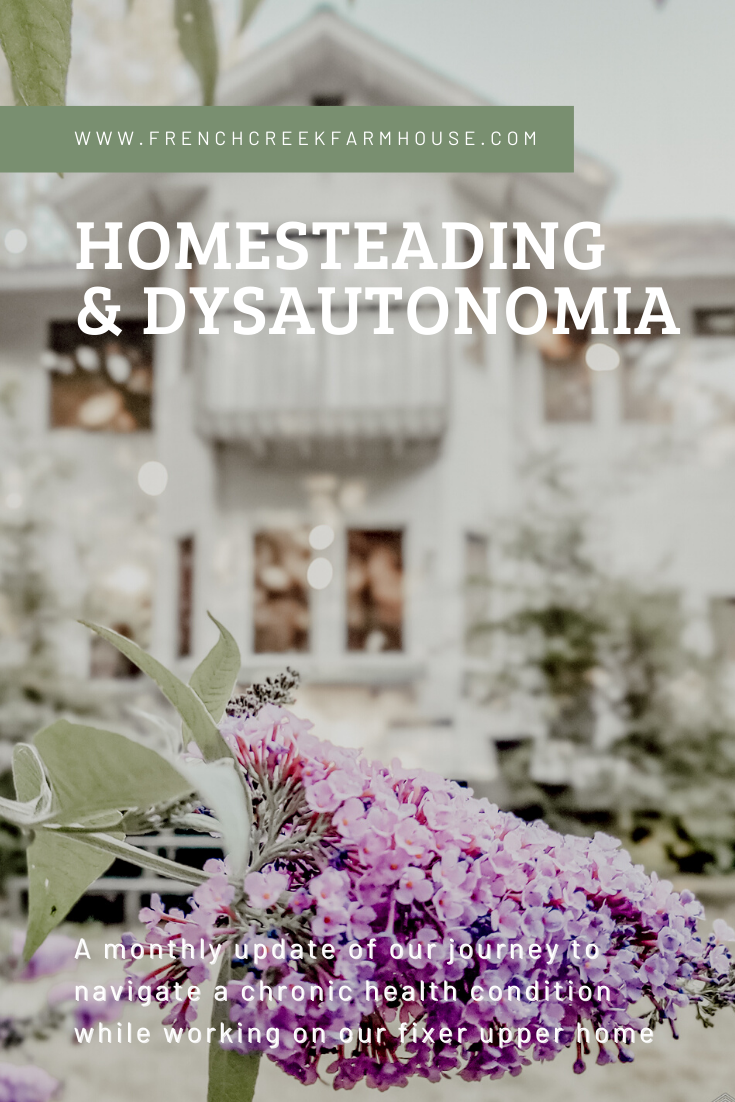
Disclosure: This is not a sponsored post, and I have received no compensation for sharing anything that follows. Some links within this blog may be affiliate links, and I might earn a commission if you make a purchase through that link. This usually amounts to cents, not dollars, and helps to support the projects featured on this blog. I only recommend products from companies that I have found to be trustworthy. Read my full disclosure here.
Additionally, what follows is a glimpse into our family’s personal experience with dysautonomia. Nothing shared here should be interpreted or used as medical advice. Due to the intimate nature of sharing our experience, we will certainly be omitting some details that are private, so you are only reading the part of any given story that we have decided to share. Please do not base any of your decisions on our experiences. Always consult your doctor about your personal health issues.
THE BACK STORY
If you’ve missed previous posts where I’ve shared about how we got here, these links will help to catch you up.
April 2021: Deciding on Treatment Approaches
March 2021: An Update on How I’ve Been Doing
Since I’m planning to share updates monthly (hopefully) for right now, I don’t want to bore anyone by repeating the whole back story each time. However, if you’re unfamiliar with our story, you’ll probably have some questions. The three biggest questions are:
- What is dysautonomia,
- how did I get it, and,
- how are we treating it?
You can read all of those details here.
You can see past posts about our COVID journey here:
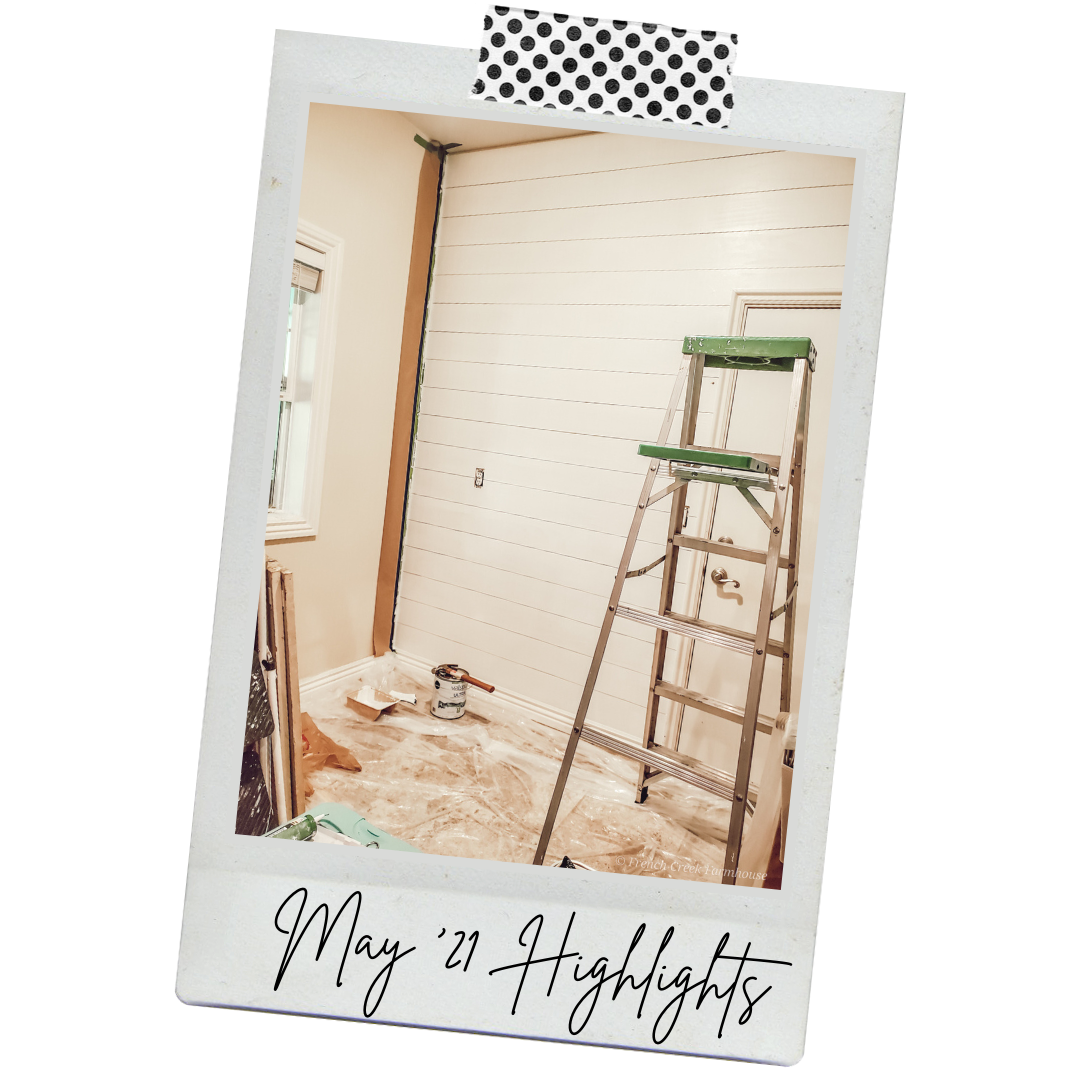 |
| May ’21 Highlights: Way back in May, we re-started our mudroom/laundry room renovation. This was the project we had to stop last year when we became infected, and it meant a lot to kick it off again. You can catch up on that 8-week project here. |
JULY 2021 IMPROVEMENTS
You might have noticed that I didn’t share any updates in May or June. I will explain…but first, let’s talk about the improvements we’ve seen so far this summer.
For starters, I have cut the use of my cane significantly. Primarily, this is due to the fact that I had been increasing my use of pharmacological treatments since sometime in April. These meds improve my orthostatic tolerance and make things easier for my heart, which means that I can stand and move around better.
However, they come with a cost…which I’ll talk more about shortly.
For now, I’ll just say that it has been nice to move around a little bit more. Mind you, this isn’t anything remotely close to the kind of activity I was doing before all this happened, but looking back on where I’ve been (i.e. almost completely bedridden for many months), it’s definitely a positive change in lifestyle.
It’s also really made a difference for me, emotionally.
Living with a disability undeniably takes a toll on your mental health. It’s frustrating to not be able to do any of the ordinary life things that you used to take for granted. It is literally a challenge for me just to take a shower, or stand at the sink to brush my teeth.
In my past life, these are things I would have done in a hour before rushing out the door to go about my day. Now, these are considered “achievements” for me. That’s a big change, and it can be so frustrating at times that it’s hard not to become overwhelmed by the sadness and loss of my previous life.
So, if I can manage to cook a meal, or prune a shrub in our garden, or arrange some flowers for our dining room table…even if that’s the only thing I can do in a whole entire day…it still feels so good compared to where I have been.
But I can’t talk about these perceived “wins” without also talking about the other side of the coin…so, let’s move onto the challenges.
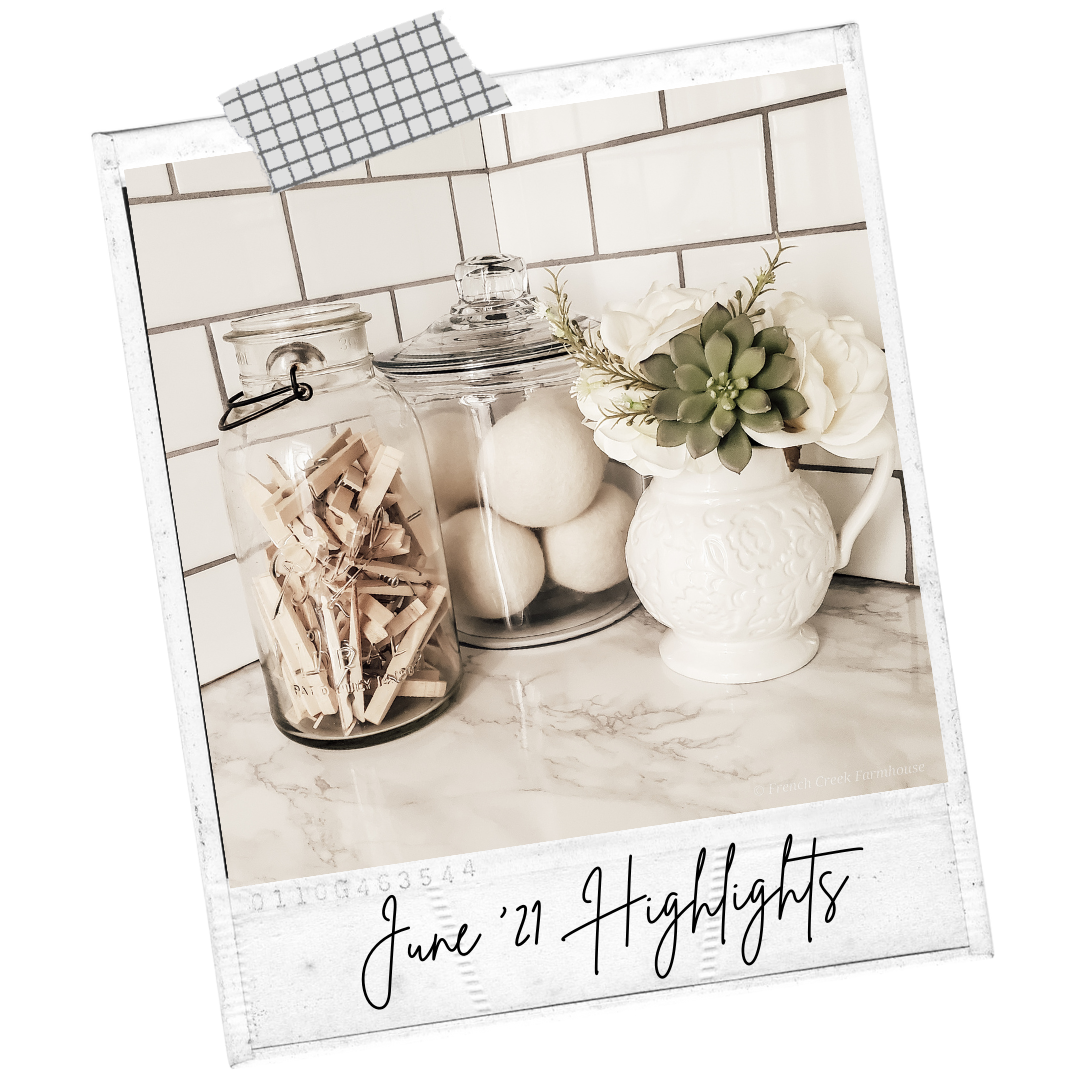 |
| June ’21 Highlights: After 8 weeks of hard work and sore muscles, we completed the mudroom/laundry room renovation in June. This was truly an emotional and transformative journey for us. Check out the reveal here. |
JULY 2021 CHALLENGES
First, let me explain why I haven’t shared an update in a couple of months.
In May, I learned that someone from my hometown had passed away from post-COVID complications. She was my age. She was living a normal life and raising her family. She had “survived” the virus–just like me.
And then she died. Months after “surviving”.
This had a profound impact on me. Sadly, she’s not the first person I’ve known who has died from this virus, but something about the similarities in our lives really got under my skin.
It made me feel very vulnerable.
It scared me.
All my focus has been on trying to get better, and even though I’m well aware that I might never fully get back to my old life (the doctors are always reminding me of that fact!), I haven’t let go of my hope that I will be an exception rather than the rule.
I imagine that she felt the same way–grateful to have survived, and working hard at getting her life back. And then she lost the fight.
I guess I hadn’t really let myself consider that possibility for my own fate, and having it happen to someone I knew really rocked me.
For starters, I gave in a bit when it comes to using the meds. Previously, I have tried to get by without them as much as possible because they come with side effects–serious ones. But, I decided to see if they would, like my doctors have said, give my heart a little help…make it not have to work so hard…and maybe things could get easier. Maybe I could do more, and get stronger.
We also installed another air conditioner in July because the heat has been at record-setting highs this year. Again, my thought was that it would help my heart work more efficiently. And, it certainly does help.
And, I’ve also been trying to push myself to be more active…even when I feel miserable. One of the problems with a chronic health condition like this is that it feeds itself. You feel bad, so you do less to give yourself rest, but then you feel worse the next time you try to do something because you become deconditioned. It’s a vicious cycle of deterioration.
The only thing to do is dig deep, find some grit, and push through it. My doctor said that it’s normal to feel much worse for several months before starting to see any glimmer of improvement. That’s not something a lot of patients can get through, and so, naturally, the statistics on “getting better” are pretty poor. But I have been so determined to be one of the patients that proves them wrong. I’m really trying.
 |
| June ’21 Highlights: The farm was truly in bloom this year as we transitioned from spring to summer! |
- The virus holes up in an organ, like the kidneys, and decides to set up shop there. It destroys the cells of that organ, and even though you aren’t having the typical viral symptoms, it’s still persisting in your body.
- The micro-blood clots that have become a hallmark of C19 are reducing blood flow…and thereby oxygen…to affected organs which causes them to fail. This is typically only determined at autopsy, so there’s not really a good way to know if this is happening with me, but anti-coagulation is part of my current therapy.
- And then there’s the idea that C19 causes a cytokine storm in the body, and your body’s immune response gets confused and starts to attack its own healthy cells even after the real threat (i.e. the virus) is gone.
 |
| July ’21 Highlights: I was in crafting mode as we got ready to celebrate Independence Day. In addition to my patriotic mini pillows, I also crafted this grain sack star garland. Printable patterns are available for both! |
MY CURRENT SYMPTOMS
When I put this list together for the very first update, it was the first time I’d ever seen all of my symptoms in list form. It was more than a bit overwhelming to see how long it was!
But, on the plus side, I can use it to keep track of when things improve (God willing!).
All of these symptoms are run of the mill for dysautonomia patients, so I’m certainly not special by any means, and there are patients who have it much worse than I do.
- Tachycardia
- Bradycardia
- Heart palpitations
- Chest pain
- Shortness of breath
- Hypovolemia
- Low blood pressure
- Dizziness/lightheadedness
- Fainting/near-fainting
- Tinnitus
- Tremors
- Difficulty walking
- Muscle/Joint/Bone pain
- Neuropathy in hands and feet (this is new and started in July 2021)
- Brain fog/memory problems/confusion
- Difficulty speaking
- Blurred vision
- Dry or teary eyes
- Migraine headaches
- Sleeping problems
- Extreme fatigue
- Difficulty regulating body temperature/Heat and cold intolerance
- Difficulty swallowing
- Nausea and/or abdominal pain
- Heartburn
- Vomiting
- GI distress
- General weakness
- Over-sensitivity to smell/distorted sense of smell
- Loss of ability to smell/taste (comes and goes unpredictably)
 |
| July ’21 Highlights: All the blooms around the farm had me inspired to continue practicing with creating large floral arrangements. I designed this one around a vintage picnic basket that I had thrifted! See more views here. |
CURRENT TREATMENT APPROACHES
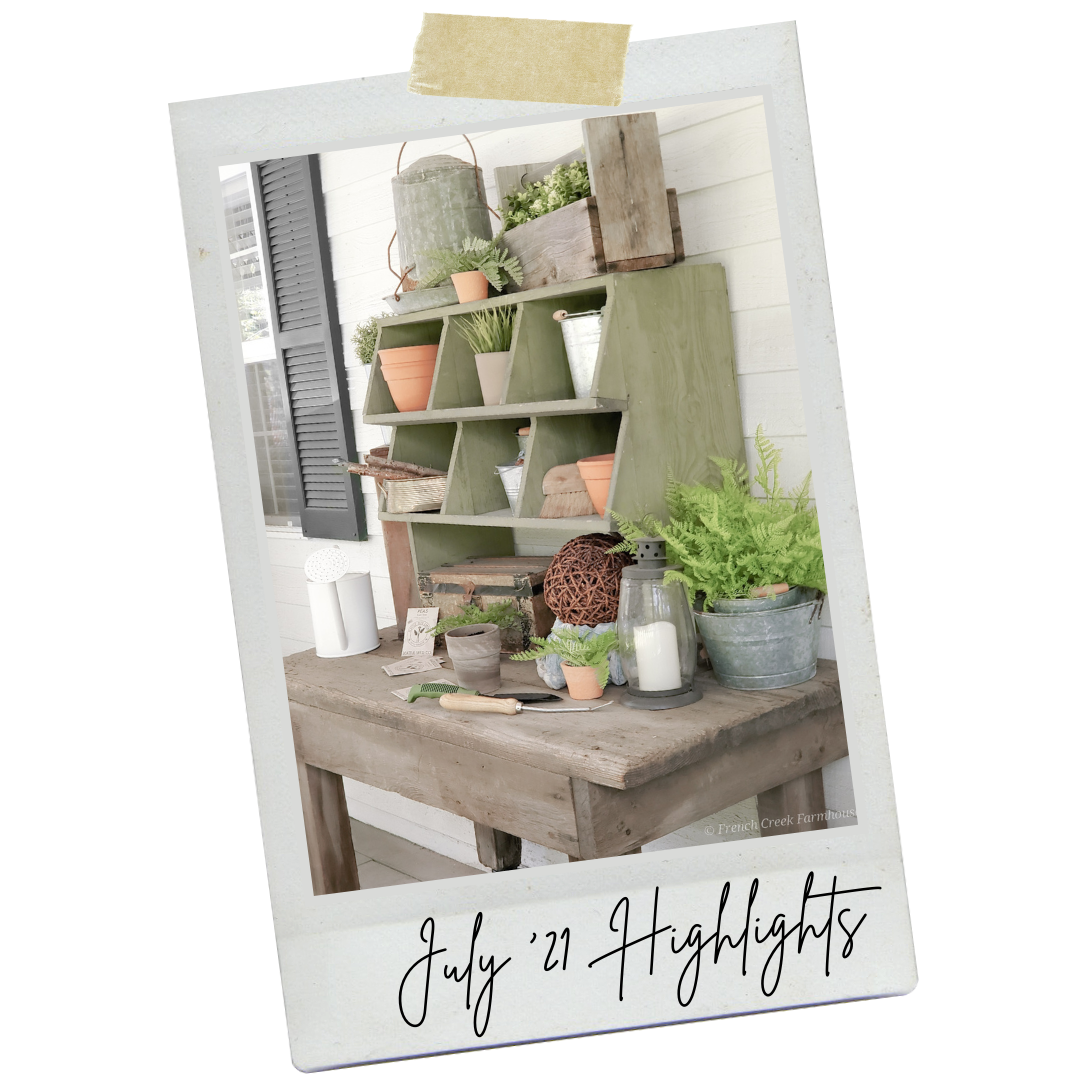 |
| July ’21 Highlights: We took advantage of some cooler temperatures for a bit and did a whole lot of work in the garden this month. We found that alternating one-day-on/one-day-off with heart meds + work, followed by rest, made it possible for me to help out with some of the things I enjoy and be more active. |
RESEARCH I’VE READ THIS MONTH
Science is working hard to figure this thing out, and it seems like there’s something new coming out every day. I try to limit how much I read because it can be a bit overwhelming, but if I find something worth sharing, I’ll be sure to include it here each month.
 |
| July ’21 Highlights: In anticipation of some projects on the horizon, I started to de-stash some of the vintage pieces I’ve been collecting over the years. I’m slowly adding them to the shop, so be sure to check that out regularly for new additions! |
LOOKING AHEAD
We have two big priorities for August. First, we’ll be re-testing my kidneys as well as a big panel of other tests to rule out some more possibilities of what could be happening.
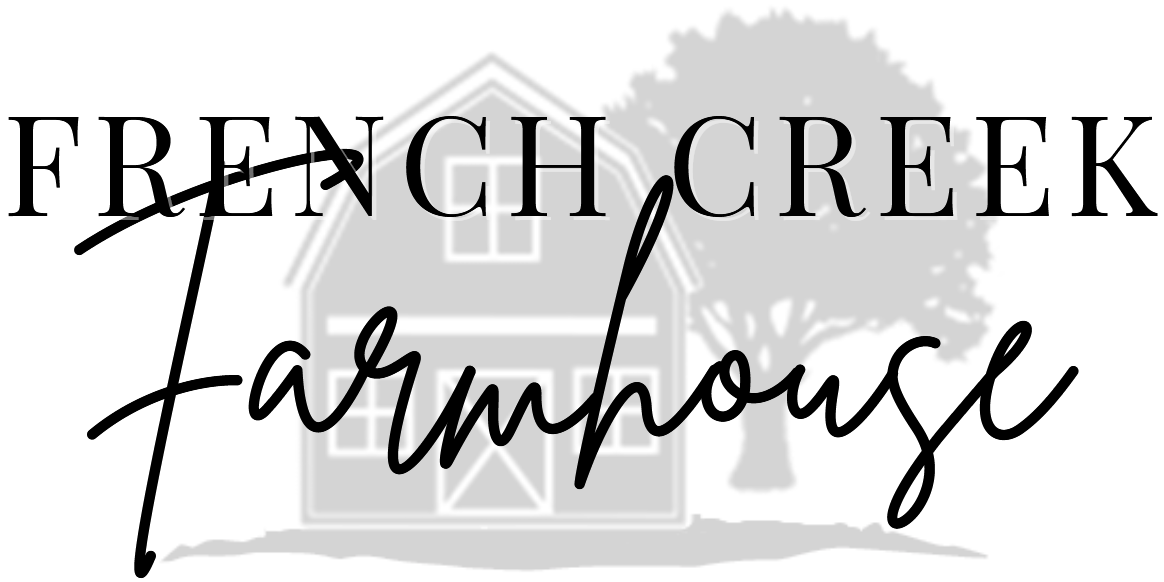
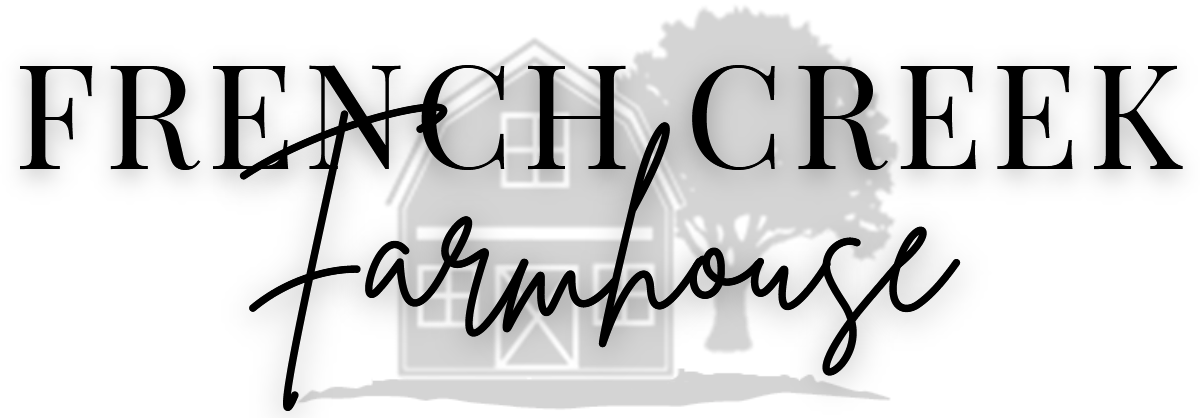



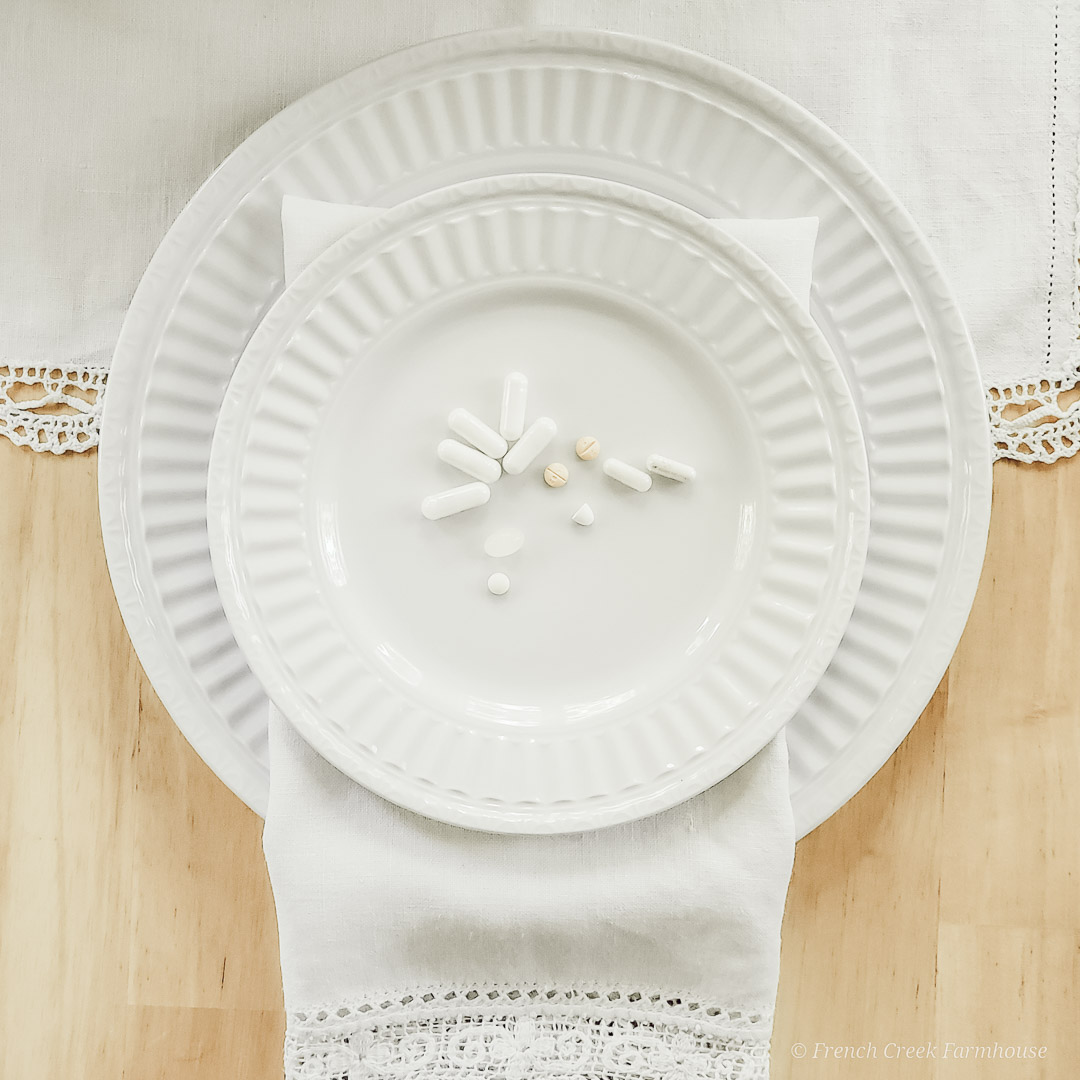


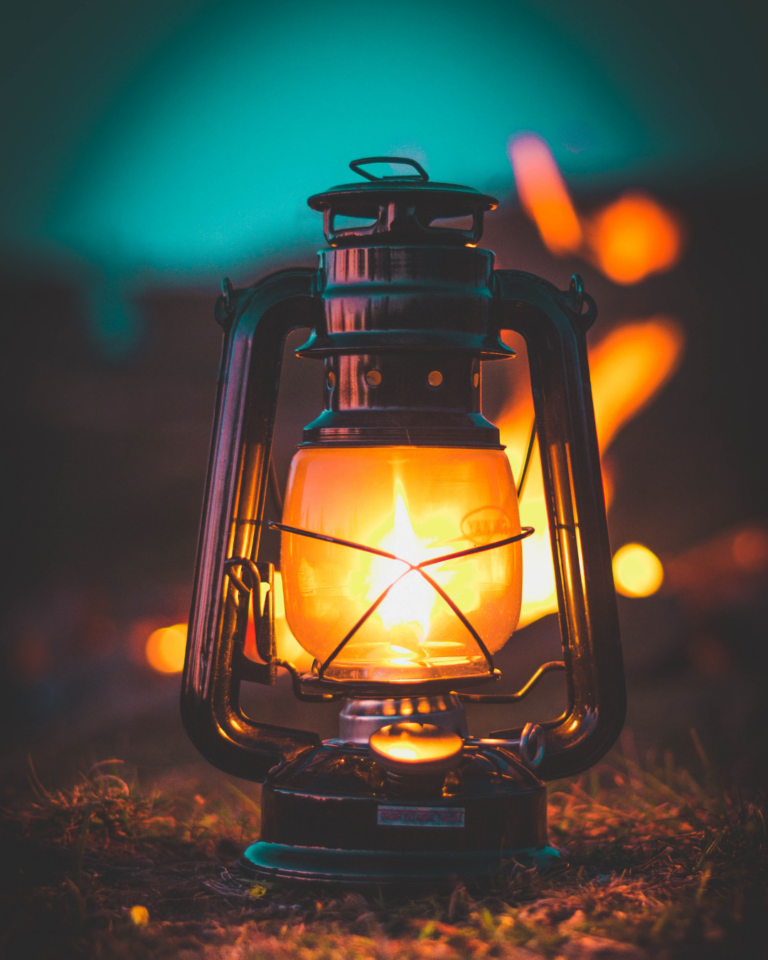
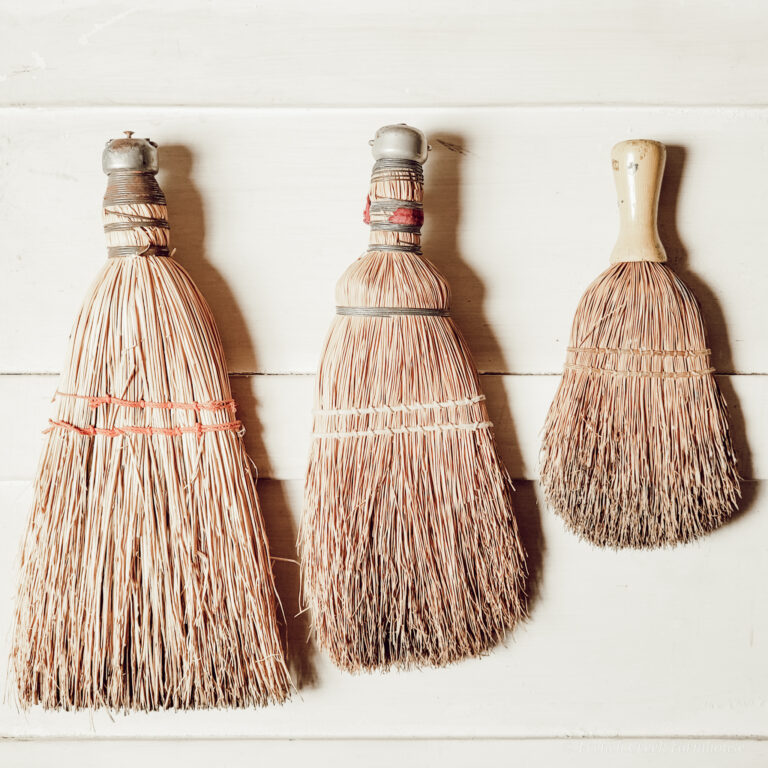
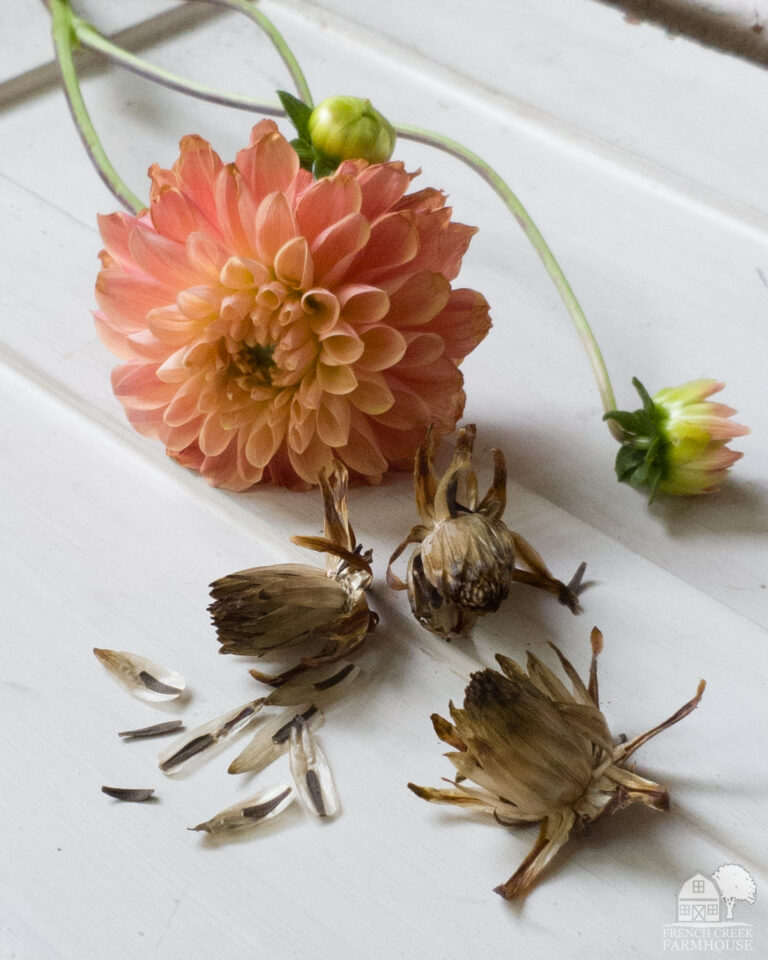
Thank you for sharing your struggles with us, I know you have helped so many. I am so sorry you have had to endure all of this, my heart hurts for you. Sending you so much love!
I have been visiting your blog for awhile and just wanted you to know how sorry I am about your health struggles, they are unending and so sad to read. I have my own health issues and that is why I like to keep up with other bloggers who are brave enough to share their symptoms. My health concerns are minimal compared to what you are going through. I would love to see a ray of light here. I hope the next time I read an update on your health you have improvement, even if ever so slight, it is something to hang onto.
You have a beautiful blog and writing style. And you must have a pretty wonderful husband too. I wish you the best dear lady. Blessings to you both.
Diane
Thank you so much for the love, Diane–it really means the world to us to have such supportive friends like you. Although this is a difficult journey, I’m so glad to have met others along the way who lift our spirits and lighten the burden. I will be keeping you and your health in my prayers! Please keep in touch–we gotta stick together! xo, Kristi
I posted a comment once but it didn’t show up, so let me try again, perhaps my error. Let me just say that I am sorry you are going through all these unending health struggles. It is so much to endure and you still find the strength to blog about it too. I have health issues myself and I find that I visit other bloggers to check on the status of their health in hopes of seeing some improvement. But my health issues pale in comparison to yours and I am so sorry for all your unnecessary suffering. I hate the long term health effects that some Covid patients have to endure. Although, my health issues have nothing to do with Covid, I can relate to others because I share some of those unusual symptoms too. I hope the next time you share a health update there is some improvement, even if ever so slight, and that it gives you something to hang onto.
You have a beautiful blog and writing style. And you must have a wonderful husband too. I wish you the best dear lady. Blessings to you both.
Diane